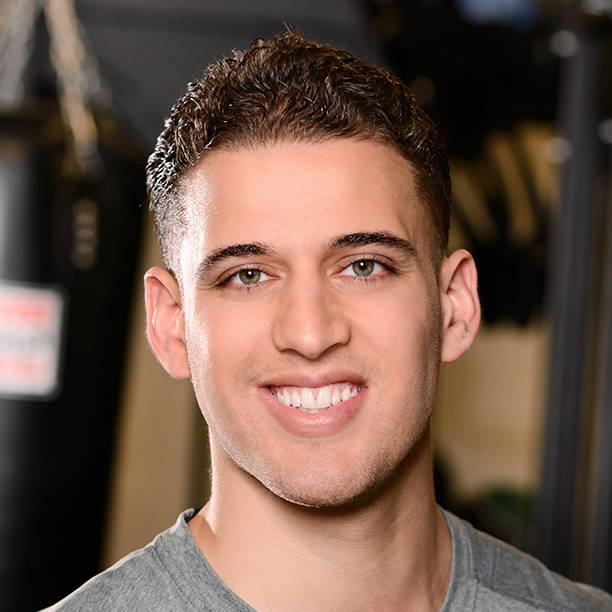|
We often stress the importance of exercise as it relates to our physical fitness. If you Google "fitness" you’ll be overwhelmed with results for the best lifting program for this, the best exercises for that and countless other resources regarding the act of actually training. One aspect that gets overlooked, though, is the foundational abilities needed for humans to perform those exercises. This is where mobility and flexibility comes into play. Most of the time, these qualities can limit or prevent us from actually achieving high-quality movement, which, in turn, limits our training capabilities. Think about it: If a squat is the best way to build your leg strength, but your movement quality is so poor that you can't actually perform a decent squat, every bad rep is moving you one step backward. Mobility is also key in decreasing pain. For one in 10 men and one in five women, upper-back pain and tightness is their normal. While it's a common issue, many are not quite sure how to help themselves get out of that pain. The first step is gaining an understanding of the why behind what's going on. Potential CausesGenerally speaking, there are two major contributors to pain in this region: a lack of postural strength and/or poor lifestyle habits. Sometimes it’s one, sometimes it’s another, but most of the time it’s a combination of the two. Postural strength is simply a way to characterize muscles of the upper back and neck. If your anterior (frontside) muscles are winning the tug of war against your posterior (backside) they can actually cause structural change such as pulling the shoulders forward, hunching over and a forward neck posture. The pectorals, hip flexors and anterior shoulder muscles are really strong and stable muscles. If the rear deltoids, traps, glutes and lats are significantly weaker and smaller than those frontside muscles, though, it could lead to a change in your posture and an increase in upper-back discomfort. Another potential cause is the lifestyle that a person lives. For example, those who sit at a desk for 40-plus hours a week could be more prone to strength deficiencies. When we sit, we are often rounded over, not using our posterior chain much and getting stuck in this forward posture. To combat hours in a chair, it's important to prioritize healthy lifestyle habits outside of work. Swapping T.V. time for a walk around the block can make a huge difference in remedying upper back and neck pain. Potential ComplicationsFor many, pain and discomfort can become so common that we lose sight of what is actually happening to our body. Take the person who constantly gets headaches. After some time, it feels inevitable, but what if the massive amounts of tension in the neck is a contributing factor to those headaches. The pain causes stress, the stress causes the headaches. We look at the headache as the problem, but really it’s not the root cause. Or the person whose lower back is always "tight." Due to a lack of strength and support in the upper back, they often compensate and use their lower back to complete exercises or daily tasks, making both unappealing. Another common drawback is poor posture. It’s a vicious cycle. Your posture is bad because you lack strength, but you can’t gain strength because your posture has led to such pain that working out is off the table.The great news is, there is a way out! Potential RemediesThe first step in addressing your pain is addressing your lifestyle. You must audit your habits and be conscious of what types of postures you’re in daily. In addition, look at your general health and how much effort you’re putting forth toward things like exercise, sleep and nutrition. These are low-hanging fruit. No supplement can replace or even come close to the impactfulness of these three things. Exercise can also greatly move the needle for you. By incorporating targeted movements into your day, you can start correcting compensations from weak muscles, improving your posture and decreasing your pain. \ This stretch is a great way to develop mobility through your T-Spine, or upper-back region. Start on all fours and gently place a hand behind your head, then rotate through the upper back and point that elbow to the sky. This not only mobilizes the upper back, but gets you an active release of tight pectorals which can also be extremely beneficial for long-term management of neck and back pain. Cat-Cow: 3-4 sets of 10 per day Cat-Cow is another great way to mobilize the spine, from lumbar to cervical and each vertebrae in between. Again, start on all fours and move from tipping your head and bottom toward the ceiling to rounding the spine. Introducing lower levels of "spinal hygiene" like this holds a ton of value for everyone from beginner to advanced. Face Pulls: 3-4 sets of 10-15 per day On the strength side of things, face pulls check a lot of boxes. This exercise not only helps you build up the muscles of the upper back for structure and resilience, but also helps you continue to improve mobility. Make sure you retract and protract your shoulder blades with each rep so you can move through a full range of motion and capitalize on all the benefits of face pulls. Remember, movement is medicine. If you’re stuck with upper back and neck pain, resting and hoping it gets better is probably not wise. Instead, proactively try to heal and get out of pain by improving lifestyle habits and making long-term progress. |




.jpg)


